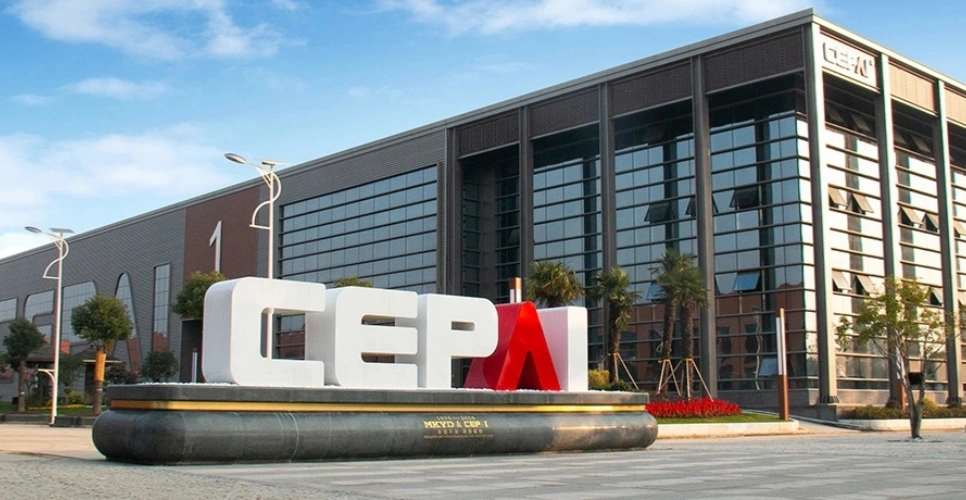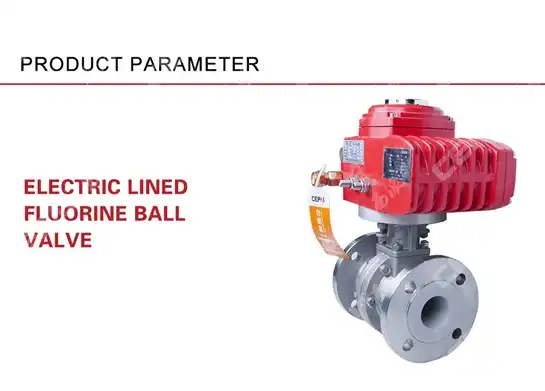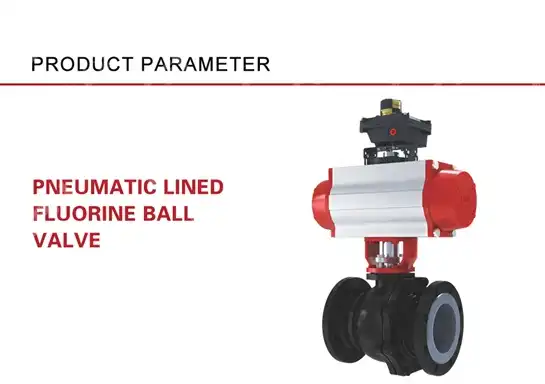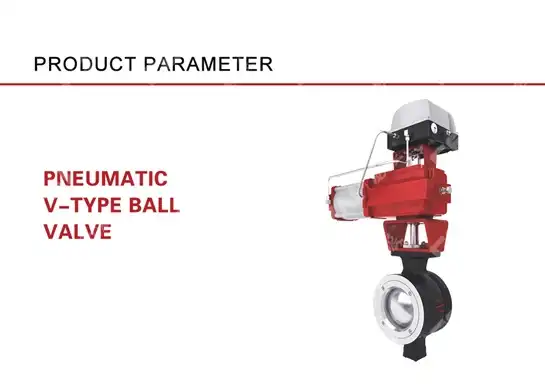Understanding IP Ratings for Electric Ball Valves: What Do They Mean
Picture this scenario: Your facility's critical Electric Ball Valve fails during a heavy rainstorm, causing costly downtime and potential safety hazards. Could this have been prevented with proper understanding of IP ratings? When selecting an Electric Ball Valve for industrial applications, understanding Ingress Protection (IP) ratings becomes crucial for ensuring reliable performance in challenging environments. These standardized ratings determine how well your Electric Ball Valve can withstand dust, moisture, and other environmental factors that could compromise its operation and longevity.
What Are IP Ratings and Why Do They Matter for Electric Ball Valves?
IP stands for "Ingress Protection". These ratings tell you the degree of protection a device has, provided by enclosures of electrical equipment, against solid particles and liquids. For Electric Ball Valve applications, IP ratings represent a critical specification that determines the valve's suitability for various environmental conditions. The International Electrotechnical Commission (IEC) developed this standardized system to provide clear guidelines for equipment protection levels across different industries and applications. Electric Ball Valve systems rely heavily on electrical components for actuation, positioning, and control functions. These components are particularly vulnerable to environmental contamination, making IP ratings essential for ensuring long-term reliability. When moisture penetrates an Electric Ball Valve actuator, it can cause corrosion, electrical failures, and complete system breakdown. Similarly, dust and particulate matter can interfere with moving parts, sensors, and electrical connections, leading to erratic performance or premature failure. The importance of IP ratings extends beyond simple protection considerations. In industrial environments where Electric Ball Valve systems operate continuously under demanding conditions, proper IP rating selection directly impacts maintenance costs, operational reliability, and safety standards. Facilities processing corrosive chemicals, operating in marine environments, or exposed to frequent washdown procedures require Electric Ball Valve systems with appropriate IP ratings to ensure consistent performance and regulatory compliance.

-
Understanding the IP Rating System Structure
The IP rating system employs a standardized two-digit format that provides comprehensive information about an Electric Ball Valve's protection capabilities. The first digit indicates protection against solid objects and particles, ranging from 0 (no protection) to 6 (complete protection against dust ingress). The second digit specifies protection against liquid ingress, ranging from 0 (no protection) to 9 (protection against high-pressure, high-temperature water jets). For Electric Ball Valve applications, common IP ratings include IP54, IP65, IP66, IP67, and IP68, each offering different levels of environmental protection. An Electric Ball Valve rated IP65 provides complete protection against dust ingress and protection against water jets from any direction, making it suitable for most industrial applications. Higher ratings like IP67 offer temporary immersion protection, while IP68 provides continuous submersion capabilities for specialized applications. Understanding these rating distinctions helps engineers select the appropriate Electric Ball Valve for specific operating conditions. Marine applications might require IP67-rated Electric Ball Valve systems for occasional splash exposure, while food processing facilities may need IP69K-rated valves that can withstand high-pressure, high-temperature cleaning procedures. The key lies in matching the IP rating requirements with actual environmental conditions to ensure optimal performance and cost-effectiveness.
Decoding Electric Ball Valve IP Rating Numbers
The first digit in an Electric Ball Valve IP rating specifically addresses solid particle protection, which is crucial for maintaining actuator performance and preventing mechanical interference. Level 1 protection guards against objects larger than 50mm, while Level 2 extends protection to objects larger than 12.5mm. These lower protection levels are typically insufficient for most Electric Ball Valve applications, as industrial environments commonly contain smaller particles that can cause operational issues. Level 3 and Level 4 protection become more relevant for Electric Ball Valve systems, protecting against objects larger than 2.5mm and 1mm respectively. However, Level 5 and Level 6 provide the most comprehensive protection for Electric Ball Valve applications. Level 5 offers dust-protected enclosures where limited dust ingress is permitted but cannot interfere with equipment operation. Level 6, designated as dust-tight, ensures no dust ingress whatsoever, providing maximum protection for sensitive Electric Ball Valve components. The selection between Level 5 and Level 6 protection for Electric Ball Valve systems depends on environmental conditions and application requirements. Manufacturing facilities with minimal dust exposure might function adequately with Level 5 protection, while mining operations, cement plants, or other high-dust environments typically require Level 6 protection to ensure reliable Electric Ball Valve operation.
-
Liquid Protection Levels for Electric Ball Valve Systems
The second digit in IP ratings addresses liquid protection, which is equally critical for Electric Ball Valve reliability and safety. Level 1 through Level 4 provide protection against various forms of water intrusion, from vertically dripping water to splashing from any direction. However, most Electric Ball Valve applications require higher protection levels to ensure reliable operation in challenging industrial environments. Level 5 protection shields Electric Ball Valve systems against water jets from any direction, making it suitable for applications where equipment may be exposed to cleaning procedures or external water sources. Level 6 extends protection to powerful water jets and heavy seas, essential for marine applications or facilities with intensive washdown requirements. These protection levels ensure that Electric Ball Valve electrical components remain functional even when exposed to significant water exposure. Levels 7, 8, and 9 provide immersion protection for Electric Ball Valve systems operating in extremely challenging conditions. Level 7 offers protection during temporary immersion up to 1 meter, while Level 8 provides continuous submersion protection for Electric Ball Valve applications in underground installations or flood-prone areas. Level 9, the highest rating, protects against high-pressure, high-temperature water jets, making it essential for Electric Ball Valve systems in specialized cleaning applications or extreme environmental conditions.
Environmental Factors Affecting Electric Ball Valve IP Rating Selection
Temperature variations significantly impact Electric Ball Valve IP rating requirements and overall system performance. Extreme temperatures can affect seal integrity, electrical component functionality, and enclosure materials, potentially compromising the stated IP rating protection levels. High-temperature environments may cause seal degradation, allowing moisture and particles to penetrate Electric Ball Valve enclosures despite adequate IP ratings under normal conditions. Cold environments present different challenges for Electric Ball Valve systems, including condensation formation, ice buildup, and material brittleness. These conditions can compromise IP rating effectiveness by creating pathways for moisture ingress or mechanical stress that exceeds design parameters. Proper Electric Ball Valve selection must consider both steady-state temperature conditions and thermal cycling effects that can impact long-term IP rating performance. Humidity levels also influence Electric Ball Valve IP rating requirements, particularly in tropical climates or steam-heavy industrial processes. High humidity can accelerate corrosion processes even when IP ratings prevent direct water ingress, making it essential to consider both environmental protection and material compatibility when selecting Electric Ball Valve systems for humid environments.
-
Chemical Exposure Considerations
Chemical environments pose unique challenges for Electric Ball Valve IP rating effectiveness, as standard IP testing typically uses clean water rather than corrosive chemicals or solvents. Chemical exposure can degrade sealing materials, compromise electrical insulation, and create pathways for contamination that weren't present during initial IP rating testing. Electric Ball Valve systems in chemical processing applications require careful consideration of both IP ratings and chemical compatibility. Vapors and fumes can penetrate Electric Ball Valve enclosures through pathways that might be adequate for standard IP rating requirements but insufficient for preventing chemical contamination. Some chemicals can attack sealing materials or electrical components even at very low concentrations, making it essential to verify material compatibility in addition to IP rating requirements. The interaction between chemical exposure and IP rating effectiveness requires comprehensive evaluation during Electric Ball Valve selection. Applications involving acids, bases, solvents, or other aggressive chemicals may require specialized sealing materials, enhanced enclosure designs, or purging systems to maintain effective environmental protection beyond standard IP rating specifications.
Testing Standards and Certification for Electric Ball Valve IP Ratings
IP rating testing for Electric Ball Valve systems follows standardized procedures established by the International Electrotechnical Commission (IEC 60529) and adopted by various national standards organizations. These tests evaluate protection against solid particle ingress and liquid ingress under controlled conditions that simulate real-world environmental exposure. Proper testing ensures that Electric Ball Valve systems meet stated IP rating specifications and provide reliable protection in actual service conditions. Solid particle testing involves exposing Electric Ball Valve enclosures to standardized dust chambers or specific particle sizes depending on the protection level being verified. Dust-tight testing (IP6X) requires operation in a dust-laden atmosphere for extended periods, confirming that no dust ingress occurs that could interfere with Electric Ball Valve operation. These tests verify that sealing systems, cable entries, and enclosure joints maintain their integrity under particulate exposure. Liquid ingress testing employs various methods depending on the protection level, from simple drip tests for lower ratings to high-pressure water jet testing for advanced protection levels. Electric Ball Valve systems undergoing IP67 testing are submerged in water under specified conditions to verify temporary immersion protection, while IP68 testing confirms continuous submersion capabilities. These standardized tests provide reliable verification of Electric Ball Valve environmental protection capabilities.
-
Certification and Compliance Requirements
Third-party certification provides independent verification that Electric Ball Valve systems meet stated IP rating requirements and comply with applicable industry standards. Certified testing laboratories employ calibrated equipment and standardized procedures to evaluate IP rating performance, ensuring consistent and reliable results across different manufacturers and product lines. This certification process provides confidence in Electric Ball Valve IP rating specifications for critical applications. Many industries require certified IP ratings for Electric Ball Valve systems used in safety-critical applications or hazardous environments. These certification requirements ensure that equipment meets minimum environmental protection standards necessary for safe and reliable operation. Electric Ball Valve systems lacking proper certification may be prohibited from use in regulated industries or specific application environments. Ongoing compliance monitoring and periodic recertification may be required for Electric Ball Valve systems in certain applications, ensuring that environmental protection capabilities remain effective throughout the equipment service life. This monitoring helps identify potential degradation in IP rating performance and enables proactive maintenance to maintain protection effectiveness.
Selecting the Right IP Rating for Your Electric Ball Valve Application

Application environment analysis forms the foundation for proper Electric Ball Valve IP rating selection, requiring comprehensive evaluation of all potential environmental exposures throughout the equipment service life. This analysis should consider not only normal operating conditions but also maintenance procedures, cleaning requirements, emergency conditions, and potential future changes in environmental exposure. Proper evaluation ensures that Electric Ball Valve systems provide adequate protection for their intended service life. Operational requirements must be balanced against protection needs when selecting Electric Ball Valve IP ratings, as higher ratings often involve trade-offs in terms of cost, accessibility, and maintenance complexity. Applications requiring frequent maintenance access might benefit from moderate IP ratings combined with protective procedures, while unmanned installations typically require higher IP ratings to ensure reliable operation without regular intervention. Economic considerations play a significant role in Electric Ball Valve IP rating selection, as higher protection levels generally involve increased initial costs and potentially higher maintenance requirements. However, the total cost of ownership analysis should consider potential failure costs, downtime impacts, and maintenance savings that result from proper environmental protection. This comprehensive evaluation often justifies higher IP ratings for critical Electric Ball Valve applications.
-
Industry-Specific Requirements
Different industries have established IP rating requirements for Electric Ball Valve systems based on typical environmental conditions and safety considerations. Oil and gas applications often require IP65 or higher ratings due to exposure to harsh weather, cleaning procedures, and potentially explosive atmospheres. These requirements ensure that Electric Ball Valve systems maintain their environmental protection capabilities even under demanding operational conditions. Food and beverage processing facilities typically require high IP ratings for Electric Ball Valve systems due to frequent washdown procedures and sanitization requirements. IP69K ratings are common in these applications, providing protection against high-pressure, high-temperature cleaning that could otherwise compromise valve electrical systems. These stringent requirements ensure food safety and regulatory compliance. Marine and offshore applications present some of the most challenging environmental conditions for Electric Ball Valve systems, requiring IP67 or IP68 ratings to withstand saltwater exposure, storm conditions, and potential flooding. These extreme requirements necessitate specialized design features and materials to maintain protection effectiveness throughout extended service periods in corrosive marine environments.
Conclusion
Understanding IP ratings for Electric Ball Valve systems is essential for ensuring reliable operation, minimizing maintenance costs, and preventing costly failures in industrial applications. Proper IP rating selection requires comprehensive analysis of environmental conditions, operational requirements, and industry-specific standards to match protection capabilities with actual service conditions. The investment in appropriate IP-rated Electric Ball Valve systems pays dividends through improved reliability, reduced maintenance, and enhanced safety performance.
Cooperate with CEPAI Group Co., LTD.
As a leading China Electric Ball Valve manufacturer established in 2009, CEPAI Group Co., LTD. brings exceptional expertise in high-performance fluid control solutions with comprehensive IP rating capabilities. Located in Jiangsu Province with a 56,000 square meter manufacturing facility, we combine advanced intelligent manufacturing with rigorous quality control to deliver superior Electric Ball Valve systems. Our extensive certifications including API, ISO, and CE standards ensure that every High Quality Electric Ball Valve meets international protection and performance requirements.
With over 156 million yuan invested in intelligent manufacturing transformation, CEPAI operates the longest high-precision production line in the Asia Pacific region, ensuring consistent quality in every Electric Ball Valve for sale. Our CNAS-certified laboratory and comprehensive testing facilities guarantee that IP rating specifications are met and exceeded. As your trusted China Electric Ball Valve supplier and China Electric Ball Valve wholesale partner, we provide competitive Electric Ball Valve price options without compromising quality or performance. Contact us at cepai@cepai.com to discover how our expertise can enhance your project success.
FAQ
Q: What is the minimum IP rating recommended for outdoor Electric Ball Valve installations?
A: For outdoor applications, Electric Ball Valve systems should have a minimum IP65 rating to protect against dust and water jets from any direction.
Q: Can Electric Ball Valve IP ratings be upgraded after installation?
A: While some protection enhancements are possible, IP ratings are typically determined by original design and cannot be significantly upgraded without major modifications.
Q: How often should Electric Ball Valve IP rating performance be verified?
A: IP rating performance should be verified annually in critical applications or whenever environmental conditions change significantly.
Q: Do higher IP ratings always mean better Electric Ball Valve performance?
A: Not necessarily. Higher IP ratings provide better environmental protection but may involve trade-offs in accessibility, cost, and maintenance complexity.
References
1. International Electrotechnical Commission Standard IEC 60529: Degrees of Protection Provided by Enclosures (IP Code), 2013 Edition, International Electrotechnical Commission Technical Committee.
2. Smith, J.R. and Anderson, K.M., "Environmental Protection Requirements for Industrial Valve Systems," Journal of Process Control Engineering, Volume 45, Issue 3, 2023.
3. Thompson, P.L., "IP Rating Applications in Fluid Control Equipment: A Comprehensive Guide," Industrial Equipment Standards Publication, 2022.
4. Martinez, C.A. and Chen, L.W., "Performance Analysis of Environmental Protection Systems in Automated Valve Applications," International Conference on Industrial Automation Proceedings, 2023.
_1746598568348.webp)
Get professional pre-sales technical consultation and valve selection services, customized solution services.

About CEPAI


